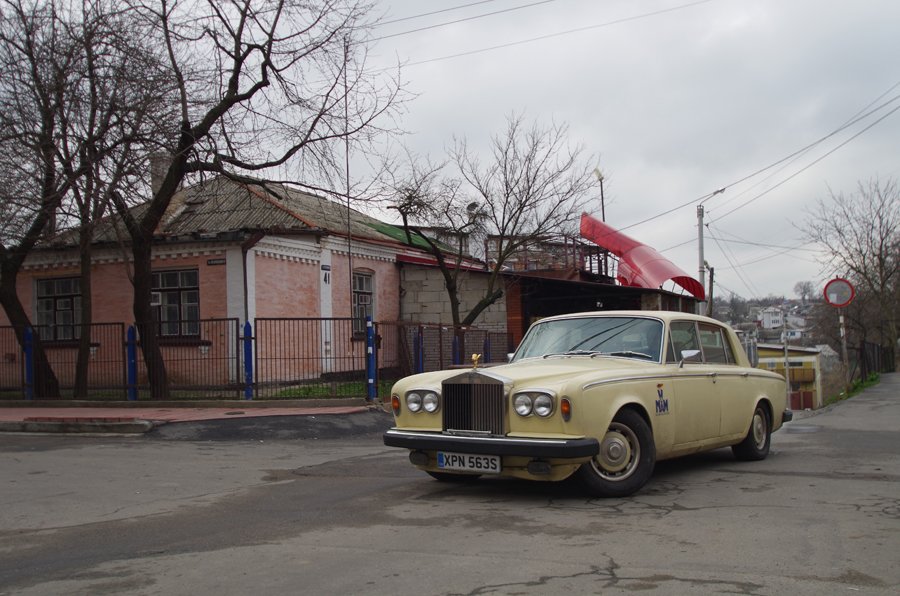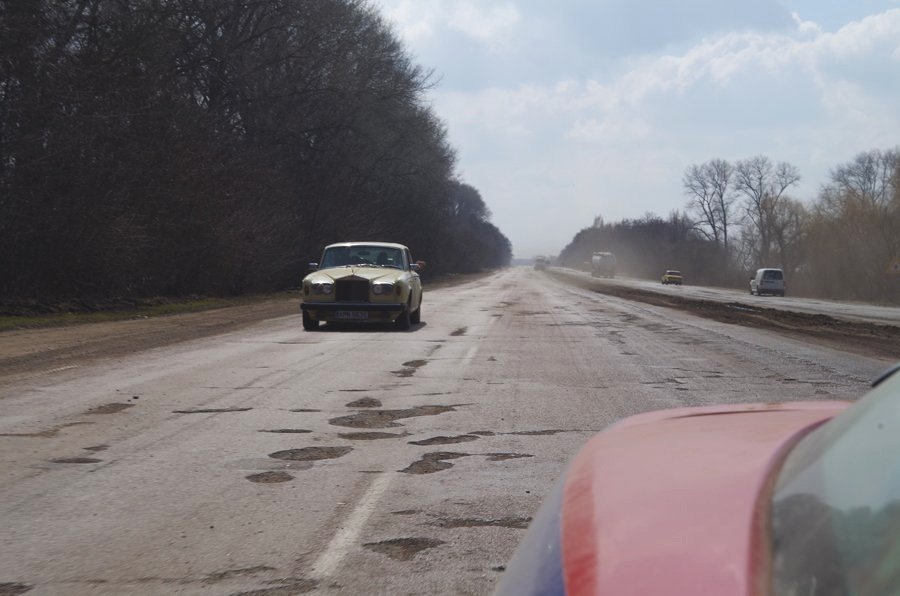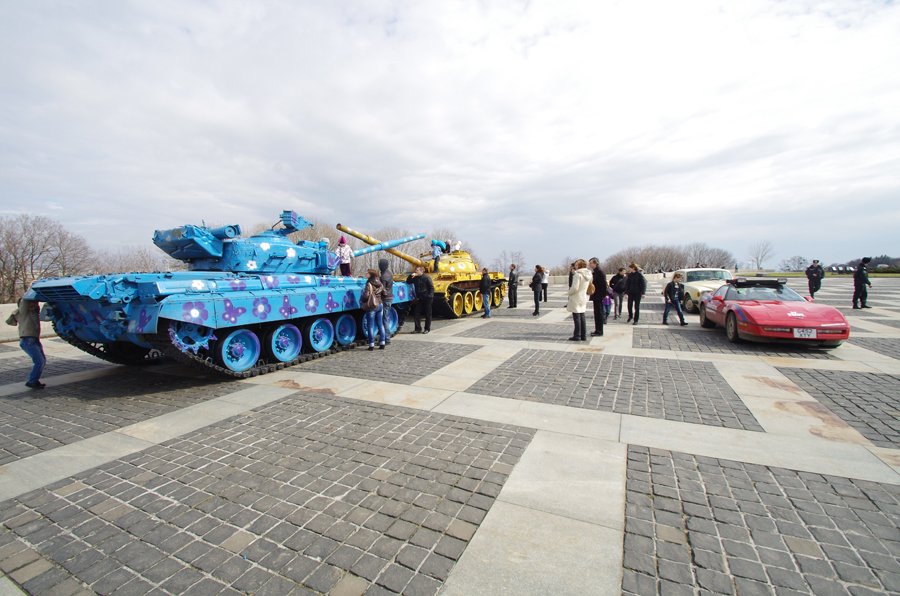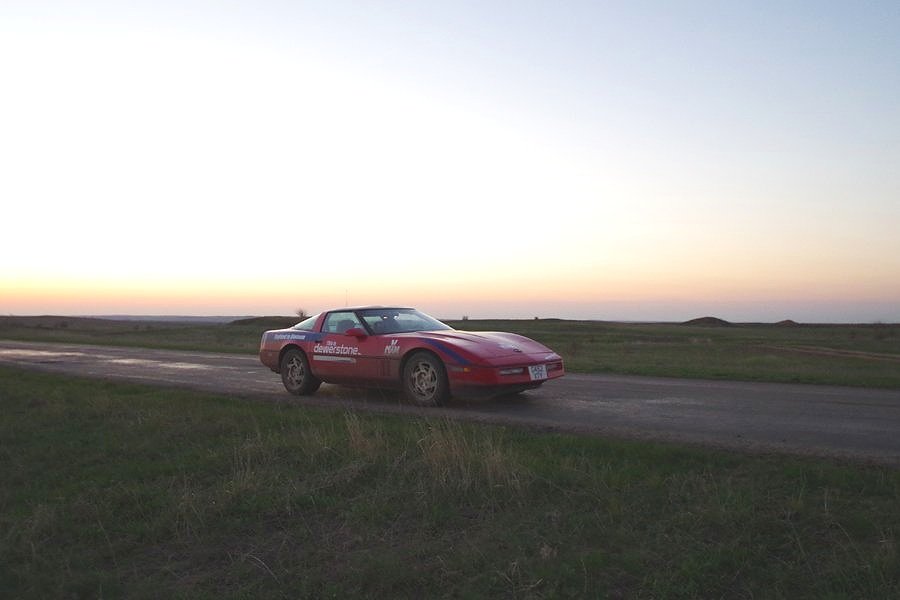Detour #203: Before the war, Ukraine
Ten years ago Kyiv was just another waypoint on one of Ben Coombs’ madcap automotive adventures. Now he takes a poignant look back at his trip through a Ukraine at peace.
The rough, mottled tarmac stretched away into the distance as we cruised along, dodging potholes on the road to Kyiv. The sky above was an oppressive grey, while the landscape around us clung on to the bleak lifelessness which precedes the arrival of spring. As I convoyed along with my friend’s ’78 Rolls-Royce, my Corvette thundered away around me, its shock n’awe engine note dominating proceedings, as it had done throughout the previous 2,500 miles which we’d covered from the UK. Road signs flashed by – Hostomel Airport, Isyum – back in 2013 when I passed through Ukraine, en-route to South East Asia, they were just names, quickly forgotten amid the rolling backdrop to our drive.
Kyiv was just another city to us back then, similar to so many others we passed through early on in the 14,000 mile drive – Budapest, Chisinau, Volgograd, Almaty – a place to spend a few days off the road relaxing and taking in the sights, such as the nation’s Independence Square, and the Ukrainian Motherland Monument, which towers over the east of the city. But little did we know, Kyiv’s days as a place in which to relax were numbered. Less than a year after our visit, the Independence Square echoed to gunfire as a pro-European revolution got underway, while nine years later it became a capital under siege.
Sometimes, it takes a road trip to show you just how trivial a road trip can be. Looking back over our time on the road in this most unlucky of nations brings to mind just how fortunate we are to be able to pursue this hobby of ours; to be able to go out onto the roads of the world knowing that, however long the drive, there’s a home waiting safely for us to return to.
But a road trip also enables you to view the places through which it passes with a new perspective. It brings them to life. The sights, the faces, the names. And back during that far-off April in Ukraine, as we dodged potholes on the long empty roads which cross the Ukrainian hinterland, it was certainly the case. To drive, to see, to stop and to speak to the people was to understand this place just a little better.
From Kyiv, we’d headed south, our route gradually curving towards the Russian border, still many days’ drive to the east. We quickly learned that in Ukraine, distances were vast, and the empty countryside rolled past our windows as if on loop. Farmland, just farmland for mile after mile, seemingly frozen in both temperature, and time. Corners were almost non-existent, and our drive became one of long straight roads, crossing plains beneath the big domed sky. Perfect Corvette country, in other words. As Kyiv was left ever further behind us, traffic thinned out to negligible levels. And even on the main roads the tarmac was seldom beyond suspicion, while the rare appearance of a petrol station was something to celebrate, especially in the thirsty, short-ranged ‘Vette. But it was when the countryside ended and we passed through nodes of habitation that we truly gained an insight into this unfortunate country.
Near the town of Uman, for instance, we found ourselves 30 metres underground, touring a former Cold War missile silo which once stood ready to rain down nuclear warheads upon The West. The silo was a museum when we visited, its missiles long gone thanks to Ukraine’s decision to renounce nuclear weapons following the end of the cold war, as animosity towards The West dissolved. Today, its role is probably somewhat different – a place of refuge from the violent uncertainties above.
Further east, near the town of Bakhmut, we found ourselves underground once again, in the still-active salt mines which lie beneath the village of Soledar. Just as with the remnants of the Cold War we’d visited days earlier, these mines had become a tourist attraction, their subterranean caverns echoing to the chatter of tour groups. But once again, their days as a tourist attraction were numbered, and soon both mining and tourism would cease, as they became a fort-over retreat from the dangers above.
But the part of Ukraine which made the biggest impression on us was the town of Donetsk. Here, fuelled by money from the nearby coal mines, we found a thriving theme bar culture. Wandering the streets, we stumbled upon a microbrewery named after a long-gone Welsh mining pioneer, a Hawaiian-style surf bar tucked away beneath a nondescript apartment block, a German-themed tap-haus and even somewhere named the Liverpool Hotel, which did a fine full English breakfast and boasted life size statues of the Beatles out front.
Meanwhile, in the centre of town, stood the obligatory war memorial; a Soviet T34 tank on a plinth. Despite its prominent, elevated position, locals walked past it without so much as looking up from their phones to give it a second glance. War was in the past; the future was bright.
But then, a year after I boarded the Corvette and burbled out of town on the road to the east, Donetsk found itself a front line once again.
We crossed into the Luhansk region, and rolled on towards the Russian border. Still the vast landscape remained cold and empty, a bleak sweep of farmland which seemed frozen in time by the last chills of winter. And, as we reached to the Russian border, we thought we had Ukraine figured out. The vast empty spaces, the winter-scarred tarmac and a populous still forging its identity and direction after its sudden emergence from the Soviet Union.
But if there’s one thing a road trip across continents can teach you, it’s that nothing is permanent. The Ukraine which we crossed ten years ago has now changed immeasurably, its future hanging in the balance.
We can only hope that that future will soon be defined by peace, and those wide open spaces will once again be able to echo to the frivolous sound of a couple of V8s on a road trip.
Words & Photography Ben Coombs Twitter | Instagram













A road trip in Slovenia is like journeying into a pastoral past, discovers Charlotte Vowden, even when you’re doing it in an EV of the future.